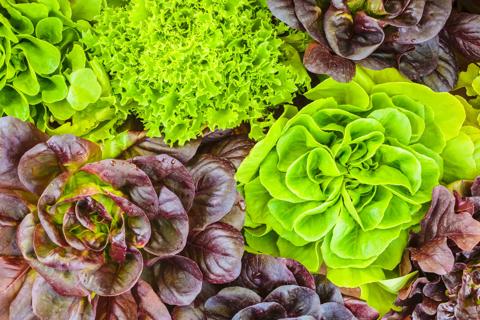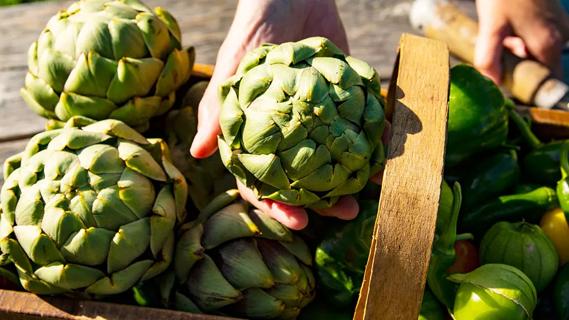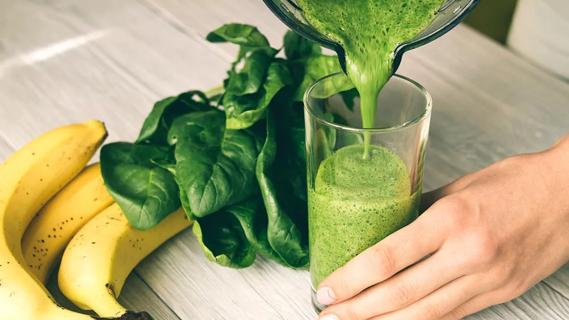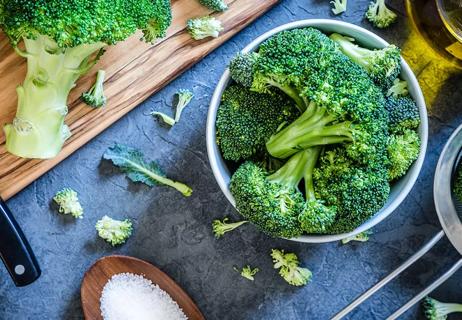The surprising effects of carotenemia

When it comes to eating carrots and other foods rich in beta-carotene, you can, in fact, have too much of a good thing. So good that you can actually develop a condition called carotenemia.
Advertisement
Cleveland Clinic is a non-profit academic medical center. Advertising on our site helps support our mission. We do not endorse non-Cleveland Clinic products or services. Policy
According to dermatologist Melissa Piliang, MD, carotenemia is caused by having too much beta-carotene in your blood steam. You know beta-carotenes as the pigment in certain red, orange and yellow fruits and veggies.
“Eating too many beta-carotene filled foods can turn your skin an orangey color,” explains Dr. Piliang. “Carotenemia is pretty uncommon, but we probably see one or two cases a year.”
Some of the most popular beta-carotene filled foods include:
But developing carotenemia isn’t always just from eating warm-colored produce. Other foods like apples, cabbage, leafy greens, kiwi, asparagus and even sometimes eggs and cheese can have it.
It’s important to note that carotenemia is usually the culprit of a restrictive diet or from eating large amounts of a specific food. This type of eating can put you at risk for getting too much and too little of certain nutrients.
“You would need to be eating about 20 to 50 milligrams of beta-carotenes per day for a few weeks to raise your levels enough to see skin discoloration,” says Dr. Piliang. “One medium carrot has about 4 milligrams of beta-carotene in it. So if you’re eating 10 carrots a day for a few weeks you could develop it.”
Advertisement
Eating a well-balanced diet ensures that you are eating all of the right nutrients ― in the right amount.
The excess beta-carotenes in your blood latch onto areas of the body that have thicker skin, like the palms, soles, knees, elbows, and folds around the nose, says Dr. Piliang. These are the first areas that typically turn an orange shade ― and it can be more obvious if you have lighter skin. Skin discoloration will become more visible as you eat more beta-carotene rich foods.
Carotenemia’s typically diagnosed by reviewing diet history and testing the levels in the blood.
Treatment is simple: Simply decrease the amount of beta-carotene rich foods that you consume. Skin discoloration will usually start to fade and return to normal in a few months.
“Little kids may be at higher risk for developing carotenemia because of pureed baby foods like squash and carrots,” says Dr. Piliang. “But there is no risk or danger to having it.”
Still — if you notice more of a yellow hue to your skin or something just doesn’t look right, get it checked out. Kidney disease, jaundice, thyroid disease, diabetes and anorexia can all cause skin discoloration.
With carotenemia, the whites of the eyes should stay white, unlike jaundice where the whites of the eyes take on a yellow tint.
Carotenemia is the perfect example of too much of a good thing. Instead focus on a well-balanced diet with a variety of fruits, vegetables, lean proteins, healthy fats and complex carbs. If you notice any sort of discoloration of your skin and it doesn’t clear up within a few days, make an appointment to see your doctor.
Advertisement
Learn more about our editorial process.
Advertisement

This versatile type of seaweed may help support weight loss, bone health and cancer prevention

Pickles are low in fat and calories and rich in some vitamins and minerals, but they’re usually high in sodium

Lettuce is a versatile vegetable loaded with antioxidants and good-for-you nutrients

This unique-looking veggie is fiber-dense and antioxidant-rich, and can improve the health of your gut, liver and heart

Vitamin-packed and antioxidant-rich, spinach can benefit your brain, eyes, blood and more

These ‘tiny trees’ provide disease-fighting nutrients and may protect your gut

It’s the flavor of fall, but it’s good to be wise about how you consume it

This classic veggie can boost your heart health, help with digestion, fight off hunger and more

If you’re feeling short of breath, sleep can be tough — propping yourself up or sleeping on your side may help

If you fear the unknown or find yourself needing reassurance often, you may identify with this attachment style

If you’re looking to boost your gut health, it’s better to get fiber from whole foods